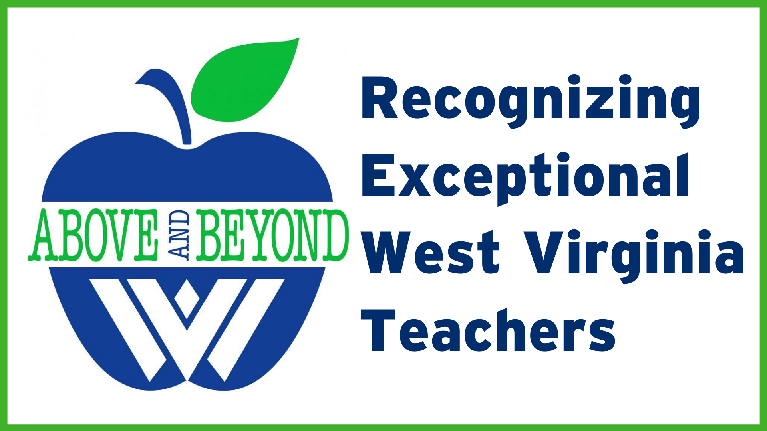It’s been about a month since all of West Virginia’s public and private four-year institutions started their fall 2020 semesters. It’s no surprise that reopening in this historic year has been a challenge for all the state’s schools. But there is some hopeful news to report. Fewer higher education students and staff in West Virginia are testing positive for the coronavirus than expected, according to officials.
Back in the spring, when things just started changing because of the coronavirus pandemic, West Virginia’s higher education officials were trying to prepare for fall 2020. Were students and faculty going to wear masks? How would testing look? Would any classes even be held in person? And how often would cleaning have to ramp up?
Well, we know now that everyone is required to wear masks on college campuses, and cleaning efforts have increased a lot. Gov. Jim Justice committed $2.5 million so that all students and staff at public and private higher education institutions would be tested at the start of the semester. Most students in dorm rooms do not have roommates, and class sizes have been reduced and have taken on a mixed look: some in-person, some remote, some hybrid.
And less than 1 percent of students and staff are testing positive for the virus at most of West Virginia’s higher education institutions.
“I don’t think anyone thought the numbers would be that low,” said Sarah Armstrong Tucker, chancellor of both the West Virginia Higher Education Policy Commission (HEPC) and the Community and Technical College System of West Virginia.
“That has been really wonderful,” she said. “And is a testament to all of the hard work that the colleges have put in place, as well as the governor testing everybody up front.”
One institution though, Tucker said, has been an outlier. That’s West Virginia University. At the start of September, WVU suspended 29 students after they attended large parties at fraternities not recognized by the university. A member of one of those fraternities tested positive for COVID-19 and yet, still attended parties.
“I understand our community’s frustrations,” said Corey Farris, dean of students at WVU in a press release. “The university is frustrated, too. We clearly communicated prior to returning to campus the health and safety protocols that must be followed in order to have on-campus learning … No matter where they are, if a student cannot abide by the health protocols put in place for their safety and the safety of the community during a global pandemic, we do not want them here.”
On top of this, Monongalia County has seen significantly high numbers of cases and was in the red zone on the West Virginia Department of Health and Human Resources’ color-coded map for a few weeks.
But there have been other challenges that have arisen that higher education officials are giving a closer look.
Anna Williams, student body president at Marshall University, spoke at the Higher Education Policy Commission’s regular meeting last week to highlight for members, areas where Marshall students have been struggling.
She described how Marshall has tried to expand broadband access for students by installing 15 hotspots that provide high speed internet to students with mobile phone access.
“I took my law school admissions test, and I had to take it on the hotspot on my iPhone, because the internet could not support the system that they were using,” Williams said. “Talk about stress.”
She said it wasn’t until they got these hotspots up and running that, even for a place like Cabell County that’s relatively well-connected, she realized how big the broadband gaps are.
“I can’t imagine what some of these other students are going through in Wayne County, Boone County, McDowell.”
The West Virginia Department of Education has partnered with the governor’s office, the HEPC and the CTC System of West Virginia to expand broadband access across the state through the Kids Connect Initiative. It created more than 1,000 WiFi hotspots throughout the state, spread out in all 55 counties, to help both K-12 students as well as higher education learners access the internet.
But broadband is still a challenge for many students who may be unable to reach these hotspots.
Williams also noted how mental health concerns have become truly apparent for college students because of the pandemic. She said flexibility from teachers is key to reducing mental health woes as well as access to programs and other help.
“Mental health is safety-net programs. It’s the technology-device programs. It’s the food and security programs,” she said. “It’s helping students find housing, or some sort of stability in their interrupted routine.”
Last month, the Centers for Disease Control and Prevention released a report that surveyed more than 5,000 Americans. The survey showed that people aged 18-24, people of color, and essential workers were experiencing considerably higher rates of adverse mental health conditions because of impacts from the pandemic. Those conditions included depression, anxiety and contemplating suicide.
Chancellor Tucker said mental health is a significant concern right now.
“People are staying in their apartments. They’re staying in their dorm rooms. And that can really add to stress, anxiety and depression,” Tucker said. “So, we’ve been trying really hard to push out resources to our students and to our faculty and our staff and our institutions that helps with mental health awareness.”
Some of those resources include simply reaching out to students more often through a text message service offered by the HEPC or having access to a counselor via telehealth. Some schools, like Marshall, are using apps that help students track their moods and keep a digital journal of how they’re feeling.
Enrollment, also, at some institutions has been a big challenge. For example, Marshall recently reduced pay for almost 800 employees because enrollment was so low this fall.
“I sincerely regret that we have to take this step,” said Marshall University President Jerome Gilbert in a statement. “It is still our intent for these temporary salary reductions to last no longer than one year.”
However, at schools like Shepherd, Concord and West Liberty Universities, they’re actually seeing an uptick in enrollment in certain programs.
Tucker said this is because many families have chosen to keep students closer to home or sent their kids to smaller schools.
Moving forward, Tucker said higher education officials are working with the West Virginia National Guard to do surveillance testing. For example, monitoring wastewater at dormitories. Tucker said you can detect COVID-19 in wastewater, and potentially stop an outbreak before it becomes an outbreak. But surveillance testing is not cheap.
Nothing about this pandemic is cheap.
“This pandemic is expensive. Doing what the colleges need to do in order to keep their campus community safe is expensive,” Tucker said. “So, there have been significant financial hits to all of the institutions.”
Tucker said she’s hopeful that the next federal relief package, like the CARES Act, will allow schools more flexibility in how they spend those relief dollars.
West Virginia’s four-year institutions saw $50 million from the CARES Act, two-year institutions saw about $10 million, and private, not-for-profit institutions saw a little more than $8 million.
But 50 percent of that money had to be given directly to students in the form of grants and refunds, while the other 50 percent had restrictions on how the schools could use it.
Most of West Virginia’s public and private four-year institutions have coronavirus dashboards on their websites that show how many people at those schools have been tested, how many cases are positive and active, and how many students have recovered.
All schools have specific resource pages that feature COVID-19 related news and updates specific to that school.




















